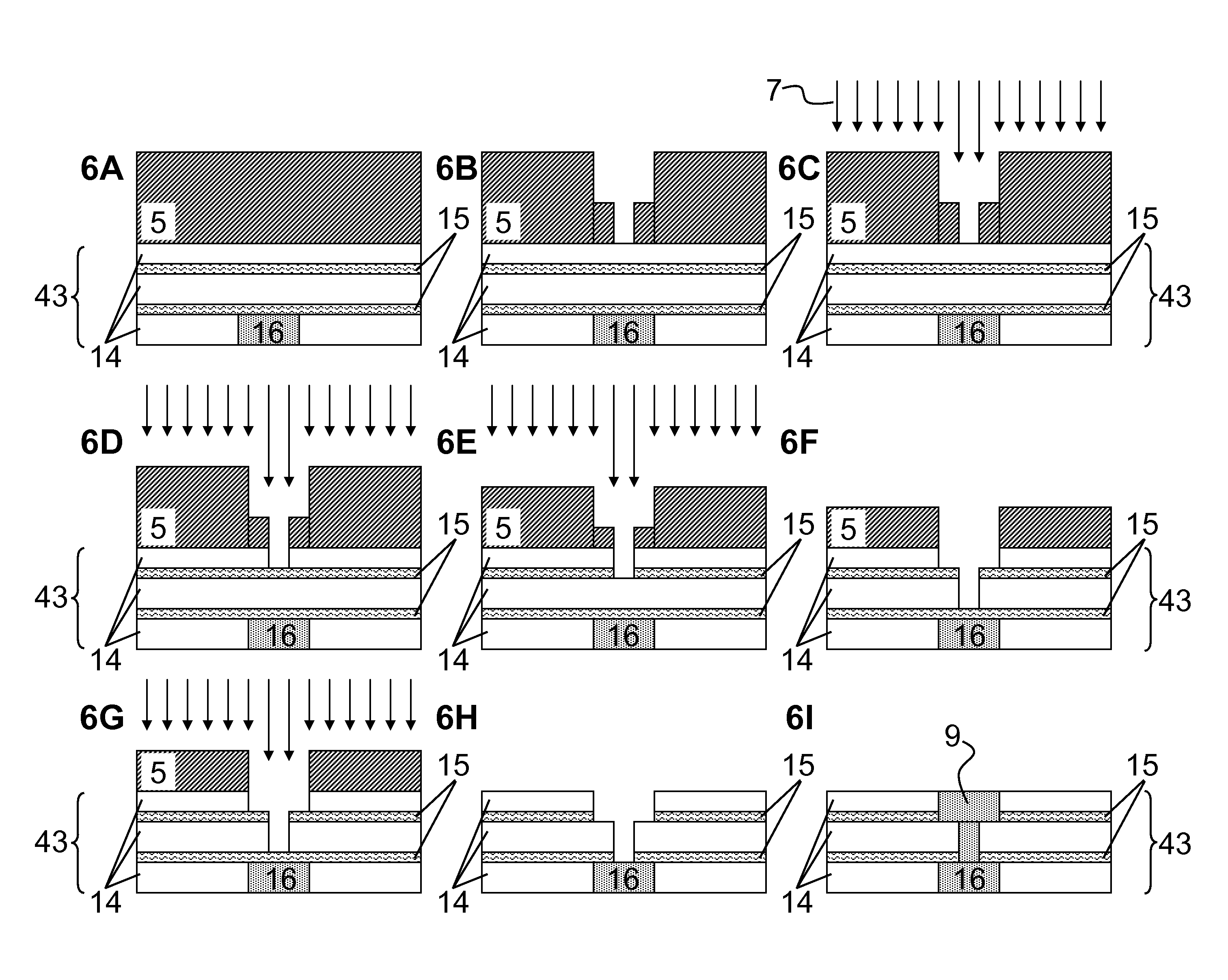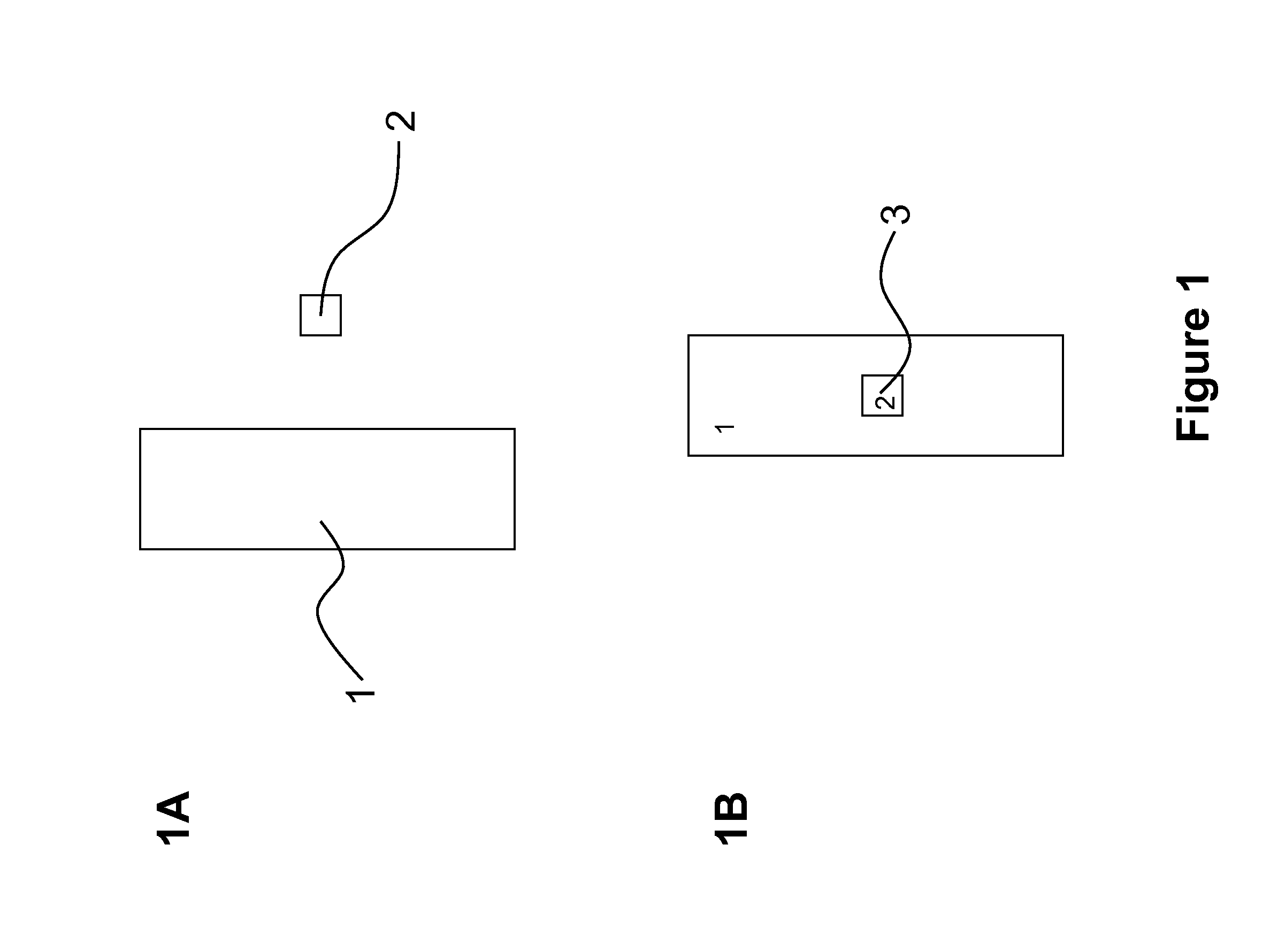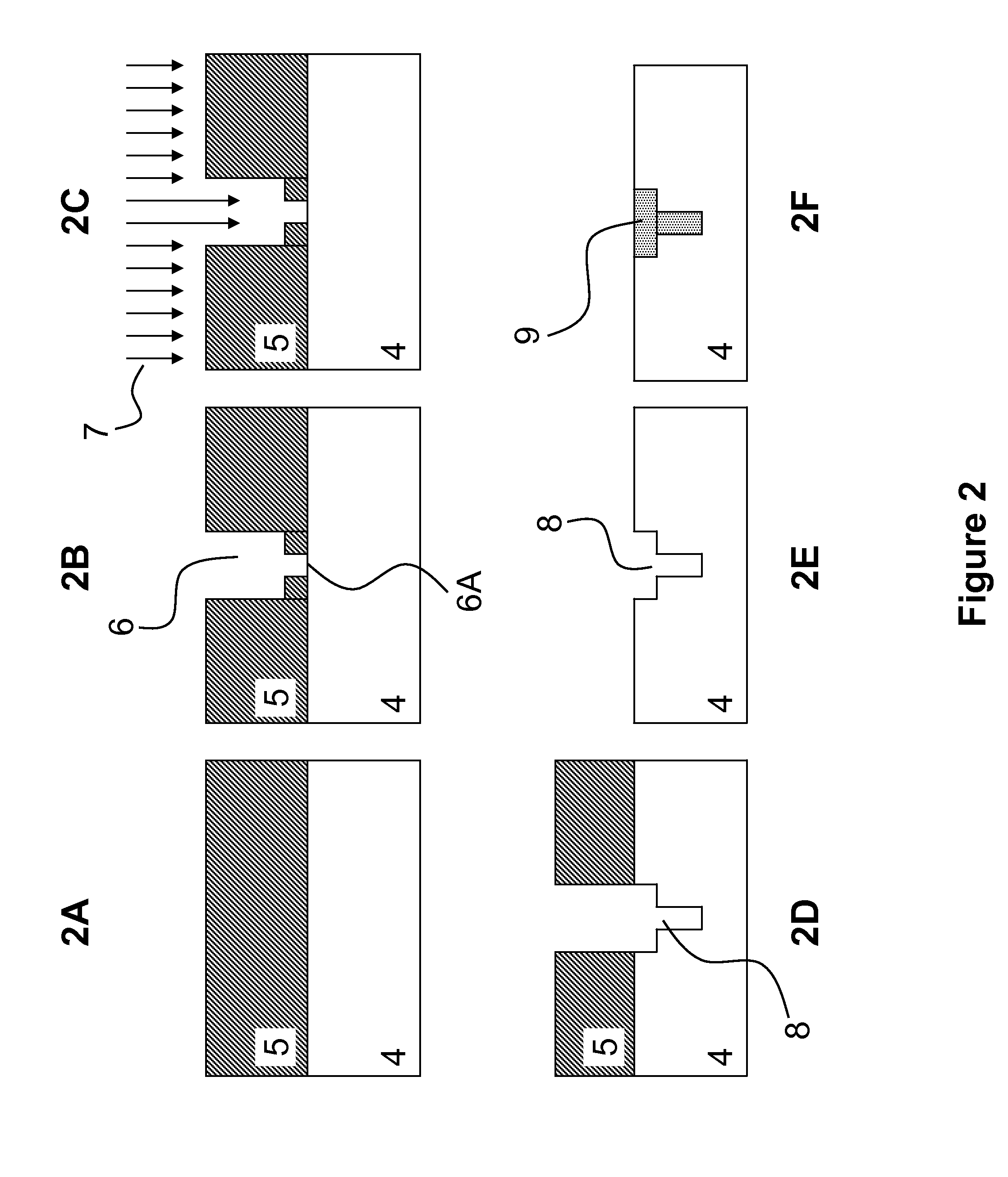Method for fabricating dual damascene profiles using sub pixel-voting lithography and devices made by same
a technology of damascene and lithography, which is applied in the direction of photomechanical treatment originals, instruments, photomechanical equipment, etc., can solve the problems of not being significantly implemented in the main stream manufacturing of semiconductor devices, requiring a significant number of discrete processing steps, and employing a complex fabrication sequence, so as to reduce the complexity, reduce the cost associated, and improve the effect of throughpu
- Summary
- Abstract
- Description
- Claims
- Application Information
AI Technical Summary
Benefits of technology
Problems solved by technology
Method used
Image
Examples
example 1
Method of Making a Dual Damascene Profile
[0086]To demonstrate the capability of present methods using partial exposures to pattern Dual Damascene profiles for making Dual Damascene profiles, e-beam lithography was used for generating an overlapping exposure of a resist layer to radiation. A two inch silicon wafer was used as the substrate in our process. Silicon dioxide of thickness 200 nm was deposited on the silicon surface by PEVCD. In our experiments we did not deposit any etch stop materials in order to avoid unnecessary processing complexity. Once the wafer was cleaned with solvents, 260 nm of 950,000 4% in Anisole, PMMA was deposited on the substrate. Specifically, a 2600 Å layer of PMMA was spun onto the wafer. Once the resist was applied, the sample was heated to 200° C. in order to drive out any remaining solvent.
[0087]We then expose the substrate to an E-Beam, which first writes a rectangle at a dose of 50%. The rectangle has a width of 2 um. We then pattern a square of s...
PUM
| Property | Measurement | Unit |
|---|---|---|
| area | aaaaa | aaaaa |
| area | aaaaa | aaaaa |
| area | aaaaa | aaaaa |
Abstract
Description
Claims
Application Information
 Login to View More
Login to View More - R&D
- Intellectual Property
- Life Sciences
- Materials
- Tech Scout
- Unparalleled Data Quality
- Higher Quality Content
- 60% Fewer Hallucinations
Browse by: Latest US Patents, China's latest patents, Technical Efficacy Thesaurus, Application Domain, Technology Topic, Popular Technical Reports.
© 2025 PatSnap. All rights reserved.Legal|Privacy policy|Modern Slavery Act Transparency Statement|Sitemap|About US| Contact US: help@patsnap.com



